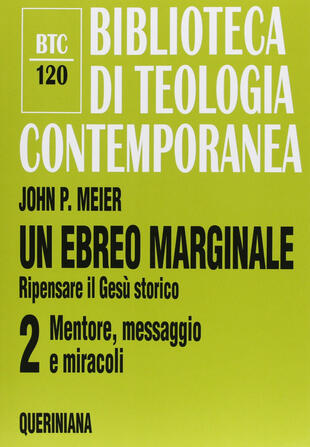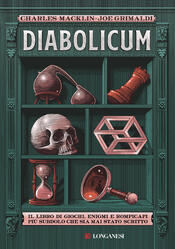

Sinossi
In questo secondo volume della ricerca di J.P. Meier si approfondisce il tentativo di dare una risposta al più grande enigma della ricerca religiosa moderna: chi era Gesù? L'autore mette a sfondo di queste pagine un immaginario incontro tra un cattolico, un protestante, un ebreo e un agnostico, che si ritrovano per elaborare un documento comune su chi fosse Gesù di Nazaret e su che cosa abbia significato. Un ebreo marginale è ciò che secondo Meier quel documento rivelerebbe. Il primo volume termina con la figura di Gesù ormai prossimo alla maturità. In questo secondo volume, l'autore prende in esame le parole e le opere di Gesù durante il suo ministero pubblico. Dall'analisi attenta che Meier consacra al suo mèntore, al suo messaggio e ai suoi miracoli emerge un ritratto veramente vivo di Gesù. Il secondo volume risolve il dibattito aperto da tempo sul rapporto tra Gesù e il suo mèntore, Giovanni Battista. Si giunge alla conclusione che Giovanni ha esercitato un particolare influsso su Gesù: «In un certo senso, Gesù non fu mai senza Giovanni». Il ministero profetico di Giovanni, il suo messaggio di penitenza, il monito di un imminente giudizio e il rito del battesimo sono confluiti nel ministero stesso di Gesù. L'annuncio della fine dei tempi da parte del Battista continuò decisamente a formare in Gesù la convinzione che Dio stava venendo a salvare il suo popolo. La profonda analisi condotta sui vangeli mostra che la proclamazione del 'regno di Dio' da parte di Gesù andava oltre la minaccia del giudizio, fino alla promessa che tale regno, regno di salvezza e guarigione, era vicino. L'autore confuta il moderno scetticismo, sostenendo in modo persuasivo che la tradizione sui miracoli di Gesù, analizzata in base a criteri storici, non fu inventata dalla chiesa primitiva. Al contrario, tale tradizione risale allo stesso Gesù storico: «Se la tradizione dei miracoli deve essere rigettata in toto perché non storica, allora lo stesso dovrebbe valere per ogni altra tradizione nei vangeli». Contraddicendo altri studiosi, questo libro mostra che Gesù operava come un taumaturgo, non come un 'mago', poiché i miracoli di Gesù avevano lo scopo di «condurre le persone alla fede, al pentimento e al discepolato».
- ISBN:
- Casa Editrice:
- Pagine: 1344
- Data di uscita: 01-01-2002
Recensioni
This is the first of a four-volume work by a Catholic biblical scholar. I found the author’s approach very interesting, whereby he attempts to jettison all myth and look solely at what empirical history has to offer us in portraying Jesus. Although this is rather complex reading, I deeply enjoyed it Leggi tutto
Part of what is slowly becoming my favourite micro-genre of non-fiction, historical detective work. This book seeks to use the scant historical sources on Jesus to reconstruct some historical core that can be unambiguously agreed upon as true by people from all persuasions. The reader is cautioned t Leggi tutto
This book provided an underwhelming re-presentation of all too familiar well worn-out tropes of Jesus while never straying too far from the unoriginal orthodoxical. Perhaps in 1991 this book was breaking new territory. Today it at best would be called superfluous. There’s a real story that could be Leggi tutto
This book is part of the Anchor Bible Reference Library. It intends to serve as an overview of the quest for the historical Jesus. Meier writes on two levels: the main body of the text, aimed at beginning graduate students in New Testament Studies as well as interested and informed non-theologians,
ONE OF THE FINEST RECENT HISTORICAL TREATMENTS OF THE LIFE OF JESUS John Paul Meier (born 1942) is a Catholic priest and biblical scholar who is Professor of Theology at the University of Notre Dame. The successor volumes to this book are 'Vol. 2 - Mentor, Message, and Miracles,' 'Volume Three,' and Leggi tutto
During part 1, where Meier sets out his methodology, I thought I was not going to make it through. Immediately after getting into the meat of the study, I was hooked. A long, deep, slow read, a page or two at a time. I did not read the footnotes, which double (at least) the length of the book. I wou Leggi tutto
Citazioni
Al momento non ci sono citazioni, inserisci tu la prima!























